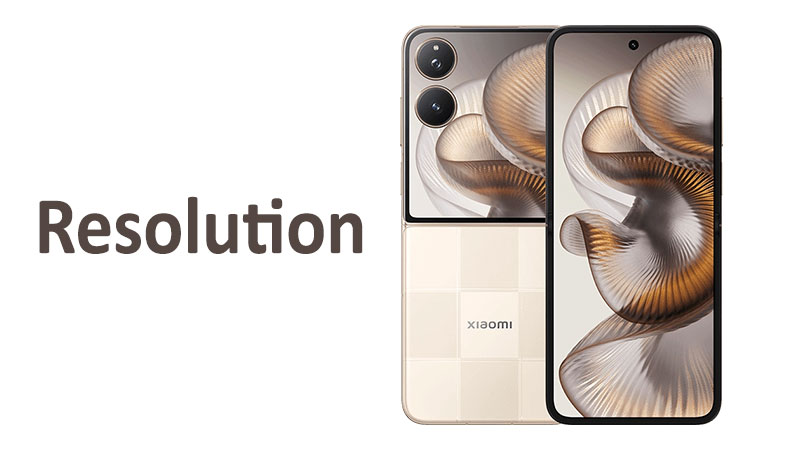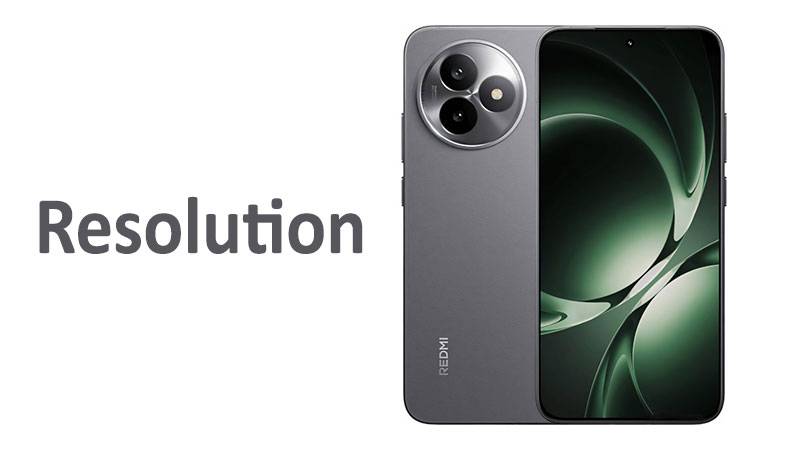The Motorola Moto G57 Power display is a centerpiece of this robust mid-range smartphone. It immediately captures the user’s attention with its impressive specifications. Motorola designed the Moto G57 Power for users prioritizing long battery life and demanding screen performance. This article provides a detailed analysis of the display technology. We will explore its IPS LCD panel, the rapid 120Hz refresh rate, and the high 1050 nits peak brightness. We also examine the precise FHD+ resolution and the cutting-edge protection offered by Corning Gorilla Glass 7i. Understanding these features helps buyers make an informed decision. This phone positions itself as a strong contender in the competitive budget segment.
Detailed Specifications Breakdown
Before diving into the user experience, we must establish the core technical details of the screen. These specifications define the display’s capabilities and limitations. The Moto G57 Power brings several high-end features down to a more accessible price point. This combination of size, speed, and brightness is often unexpected in this category.
Display Technology: IPS LCD Panel
The Moto G57 Power utilizes an IPS LCD panel. IPS stands for In-Plane Switching. This technology offers excellent color accuracy and superior viewing angles compared to older LCD types.
IPS technology ensures that colors remain consistent even when you view the screen from an angle. This is crucial for shared viewing experiences or gaming sessions. While IPS LCDs generally do not achieve the perfect blacks of AMOLED displays, they often offer more natural color calibration. They also eliminate the risk of screen burn-in, a potential issue with organic light-emitting diode panels. Motorola made a deliberate choice to use IPS LCD, balancing quality, cost, and longevity.
Screen Size and Immersion: 6.72 Inches
The display measures 6.72 inches diagonally. This large size contributes significantly to the device’s media and gaming appeal. A bigger screen provides a more immersive viewing experience for movies and video streaming.
The expansive size also improves multitasking capabilities. Users can comfortably view multiple applications simultaneously. This diagonal measurement results in a screen-to-body ratio of approximately 85.8%. This metric shows the display takes up a substantial portion of the phone’s front surface. The relatively narrow bezels maximize the usable screen area. This design choice makes the phone feel modern and minimizes distractions.
Sharpness and Clarity: Full HD+ Resolution
The resolution of the Moto G57 Power display is 1080 x 2400 pixels. This is a Full High Definition Plus (FHD+) resolution. The screen utilizes a 20:9 aspect ratio, which is tall and narrow. This ratio makes the screen ideal for reading long articles and viewing content optimized for social media feeds.
The pixel density stands at around 392 pixels per inch (ppi). At this density, individual pixels are virtually indistinguishable during normal use. Users experience sharp text, clear images, and well-defined graphics. The FHD+ resolution is the sweet spot for a mid-range phone. It provides excellent visual detail without excessively draining the large 7,000 mAh battery or taxing the processor.
Fluidity and Responsiveness: 120Hz Refresh Rate
One of the most significant upgrades is the 120Hz refresh rate. The refresh rate dictates how many times the screen updates its image per second. A standard smartphone uses 60Hz.
The 120Hz rate means the image updates 120 times every second. This results in dramatically smoother motion. The benefit is immediately noticeable when scrolling through web pages, navigating the user interface, and especially during fast-paced gaming. High refresh rates reduce motion blur, providing a competitive edge for mobile gamers. They also create a premium, fluid user experience, making the phone feel faster and more responsive overall.
Brightness Output: 1050 Nits Peak
The display boasts a high peak brightness of 1050 nits. Nits measure the luminance, or light output, of the screen. This high number is crucial for outdoor visibility.
When users step outside on a sunny day, the screen needs sufficient brightness to overcome direct sunlight. The Moto G57 Power’s high peak brightness ensures the screen remains legible under these challenging conditions. The phone automatically activates this High Brightness Mode (HBM) when ambient light levels are high. This feature is a significant improvement for a phone in the mid-range category, where displays often struggle with outdoor performance.
Durability and Protection: Corning Gorilla Glass 7i
The Moto G57 Power display is protected by Corning Gorilla Glass 7i. This specific version of Gorilla Glass is engineered for the intermediate and value-segment smartphone market.
Corning designed the 7i to offer improved drop and scratch resistance compared to competing glasses in the budget sector. Lab tests confirm it can survive drops from up to one meter onto rough surfaces like simulated asphalt. This provides buyers with extra peace of mind regarding the phone’s long-term durability. It is an important shield against everyday bumps, scratches from keys, and minor accidents.
Comparative Display Analysis
The Moto G57 Power’s display choices position it directly against key competitors and its own predecessor. This comparison helps illustrate the value Motorola offers with this screen.
IPS LCD vs. AMOLED Competitors
Many mid-range rivals now feature AMOLED or OLED panels. AMOLED panels typically offer infinitely better contrast and perfect blacks. They also consume less power when displaying darker content.
However, the Moto G57 Power’s IPS LCD compensates by offering excellent color fidelity and high brightness. The 1050 nits peak brightness often surpasses the typical outdoor performance of budget AMOLED panels. Furthermore, the absence of PWM (Pulse Width Modulation) flicker, common in some OLED screens, can make the IPS panel easier on the eyes for certain sensitive users. The IPS choice here prioritizes consistency and brightness over deep blacks.
Comparison to Previous Moto G Models
The Moto G series has consistently focused on value. The Moto G57 Power marks a clear upgrade in several key display aspects over older models, such as the Moto G Power (2022).
The G Power (2022) featured a 6.5-inch screen with a lower 90Hz refresh rate and a lower HD+ resolution (720×1600 pixels). The Moto G57 Power significantly improves this experience. It offers a larger 6.72-inch panel, a fluid 120Hz refresh rate, and a much sharper Full HD+ resolution. This generational leap provides a better visual and interactive experience across the board. The G57 Power clearly elevates the display experience for Motorola’s ‘Power’ lineup.
Review of Display Quality and Performance
The technical specifications translate into tangible benefits for the end-user. We evaluate the performance of the display across three critical areas: media consumption, gaming, and general usage.
Media Consumption Experience
The large 6.72-inch size and FHD+ resolution make video watching highly enjoyable. The 20:9 aspect ratio is well-suited for widescreen content, minimizing black bars on many popular movies and shows.
Color reproduction from the IPS panel is vibrant and accurate. Users will notice subtle differences in color tones. The high peak brightness is useful for binge-watching outdoors or near bright windows. While a dedicated video processor would enhance colors further, the raw display quality is excellent for a phone in this price bracket. Stereo speakers with Dolby Atmos complement the large screen. This combination creates an immersive multimedia package.
Gaming Performance
The 120Hz refresh rate is the star feature for gamers. It provides a distinct competitive advantage in supported titles. Games running at 120 frames per second look incredibly smooth. This fluidity is particularly beneficial in fast-paced action games.
The display also features a high touch sampling rate. This means the screen registers user input quickly and accurately. This quick response time minimizes input lag. The large size of the screen offers plenty of space for virtual controls, enhancing the gaming experience. The display keeps up with the Snapdragon 6s Gen 4 mobile platform, ensuring a smooth gaming session.
Outdoor Visibility and Brightness
The 1050 nits peak brightness is one of the strongest attributes of this screen. Most mid-range phones peak closer to 600 or 800 nits.
Motorola’s implementation of the High Brightness Mode is effective. It automatically adjusts the luminance to ensure good readability under harsh sunlight. This feature is not just a specification; it is a practical benefit for users who frequently use their phones outdoors. Reading emails or viewing maps in bright conditions becomes much easier. This reliable visibility enhances the overall practicality of the device.
Pros and Cons of the Moto G57 Power Display
Evaluating the screen requires a balanced look at both its strengths and weaknesses. The display excels in key areas but still faces certain limitations inherent to the chosen technology.
Key Advantages (Pros)
The display offers several compelling reasons for users to choose the Moto G57 Power. The blend of speed and brightness is particularly attractive.
- Ultra-Smooth 120Hz Refresh Rate: This high rate delivers a premium, fluid user experience far superior to standard 60Hz screens.
- Excellent Outdoor Brightness: The 1050 nits peak brightness is exceptional for an IPS panel in this segment. It ensures great legibility outside.
- Large and Sharp Panel: The 6.72-inch size combined with FHD+ resolution (392 ppi) provides detailed, immersive visuals for media.
- Corning Gorilla Glass 7i: This advanced protection offers better durability and drop resistance than older Gorilla Glass versions used by competitors.
- No PWM Flicker: As an IPS LCD, it avoids the high-frequency flickering sometimes associated with OLED panels. This can be beneficial for users with eye sensitivity.
Potential Drawbacks (Cons)
Despite its strengths, the display has limitations, mainly due to the IPS LCD technology itself. Buyers should be aware of these trade-offs.
- Black Levels are Not Perfect: The IPS technology cannot display true, inky blacks. They appear as a deep grey, unlike the perfect blacks seen on AMOLED screens.
- Higher Power Consumption (Generally): IPS LCDs typically consume more power than equivalent AMOLED screens, especially when displaying bright white content. The large 7000mAh battery helps mitigate this.
- Slightly Thicker Bezels: While the screen-to-body ratio is good, AMOLED phones often achieve even thinner bezels due to the display structure.
- No Always-On Display: Unlike AMOLED screens, the IPS LCD cannot efficiently support a true always-on display feature. This is a trade-off for cost and technology type.
Essential Buyer Considerations
Prospective buyers must weigh the display’s features against their personal usage habits and priorities. The Moto G57 Power is not aimed at the absolute premium market, so expectations must remain realistic.
Prioritizing User Experience Over Pure Contrast
If a user prioritizes the smooth experience of a 120Hz refresh rate above all else, the Moto G57 Power delivers. The responsiveness vastly improves daily interactions. However, if a user mostly watches content in a dark room and demands cinematic black levels, a competing AMOLED device might be a better fit. The choice is between superior fluidity and superior contrast.
Understanding the IPS Brightness Advantage
The high peak brightness is a genuine selling point. It makes the phone a practical companion for people who spend time outdoors. This level of brightness is a great asset for delivery drivers, outdoor workers, or anyone living in very sunny climates. The screen’s ability to handle glare is a major functional benefit.
The Role of Gorilla Glass 7i in Value
Durability is a key concern for budget-conscious buyers. Investing in a phone with Corning Gorilla Glass 7i reduces the risk of expensive screen replacements. This added layer of protection translates to better long-term value for the device. Buyers should recognize that the phone offers military-grade durability (MIL-STD-810H) alongside the display protection.
Display Color Boost Feature
Motorola has included a ‘Display Color Boost’ feature. This software enhancement aims to optimize color and reduce glare. It is designed to make visuals crystal clear even in challenging light. Users can likely adjust this setting based on their preference, tuning the screen to be punchier or more color-accurate. Exploring these custom color modes is essential for maximizing satisfaction with the display.
Optimizing Viewing Modes
The Moto G57 Power includes various software features to help optimize the viewing experience for different scenarios. These modes allow users to fine-tune the display’s output.
The 120Hz Adaptive Mode
The 120Hz refresh rate can be set to adaptive. This feature dynamically switches the refresh rate based on the content being displayed. For static images or reading, the phone lowers the rate to save battery. For scrolling or gaming, it kicks back up to 120Hz for maximum smoothness. This is a crucial function for balancing the 120Hz speed with the need for extended battery life.
Reading Mode and Eye Comfort
The phone offers a reading or eye comfort mode. This feature reduces the emission of blue light, which can disrupt sleep patterns. The mode shifts the display color temperature towards warmer tones. Users can schedule this mode to activate automatically in the evening. This customization demonstrates Motorola’s commitment to user eye health, which is important given the large screen size.
Color Temperature Controls
Beyond the standard boost mode, the operating system allows manual control over the white balance and color temperature. Users can adjust the display to be cooler (more blue) or warmer (more yellow). Technical users can calibrate the screen to match professional standards if needed. Most casual users will find the default color settings pleasant and vibrant.
Summary of Display Technology and Future Outlook
The Moto G57 Power display successfully blends high-end refresh rates with dependable LCD technology. It proves that IPS LCD remains a viable and competitive choice in the mid-range market. Motorola strategically chose this panel to offer extreme brightness and fluidity while managing manufacturing costs.
The use of the newer Corning Gorilla Glass 7i shows a forward-looking approach to durability. It signifies Motorola’s intent to future-proof their budget offerings against physical damage. This commitment to both performance and protection is highly beneficial for the average consumer. The display is not just big; it is fast, bright, and resilient.
Conclusion: Making the Informed Choice
The Motorola Moto G57 Power display delivers a genuinely high-quality visual and interactive experience that exceeds expectations for its price point. It successfully leverages the ultra-smooth 120Hz refresh rate for exceptional scrolling and gaming. The 6.72-inch FHD+ panel offers sharp detail and is perfectly suited for media consumption. Crucially, its 1050 nits peak brightness makes it a powerhouse for outdoor use, a common weakness for competitors.
Buyers who demand the deepest black levels and true HDR viewing should consider an AMOLED-equipped alternative. However, those who prioritize overall responsiveness, daytime usability, large screen size, and superior screen durability should confidently choose the Moto G57 Power. The display is a core strength of this device, solidifying the Moto G57 Power’s position as a long-lasting, high-performing device for the budget-conscious consumer.
Frequently Asked Questions (FAQ)
1. Does the Moto G57 Power display support Always-On Display?
No, the Motorola Moto G57 Power uses an IPS LCD screen. This technology is not efficient for an always-on display feature. The phone instead uses a ‘Peek Display’ feature that briefly lights up for notifications.
2. Is the 120Hz refresh rate automatically adjustable?
Yes, the display features an adaptive refresh rate setting. This setting intelligently switches between 60Hz and 120Hz. It optimizes performance and fluidity while conserving battery life when a high rate is not necessary.
3. How does the 1050 nits brightness compare to other mid-range phones?
The 1050 nits peak brightness is extremely high for a mid-range phone. It is particularly strong for an IPS LCD panel. This high luminance significantly improves screen visibility and reading comfort when using the phone in direct sunlight.
4. What is the benefit of Corning Gorilla Glass 7i?
Corning Gorilla Glass 7i is a specific, durable glass designed for value-segment phones. It offers enhanced drop protection and scratch resistance. It can typically survive drops up to one meter onto rough surfaces, providing substantial peace of mind.
5. Is the Moto G57 Power screen suitable for mobile gaming?
Yes, the Moto G57 Power screen is highly suitable for mobile gaming. The large 6.72-inch screen provides an immersive view. More importantly, the 120Hz refresh rate ensures smooth, tear-free motion, which is critical for a high-quality gaming experience.



